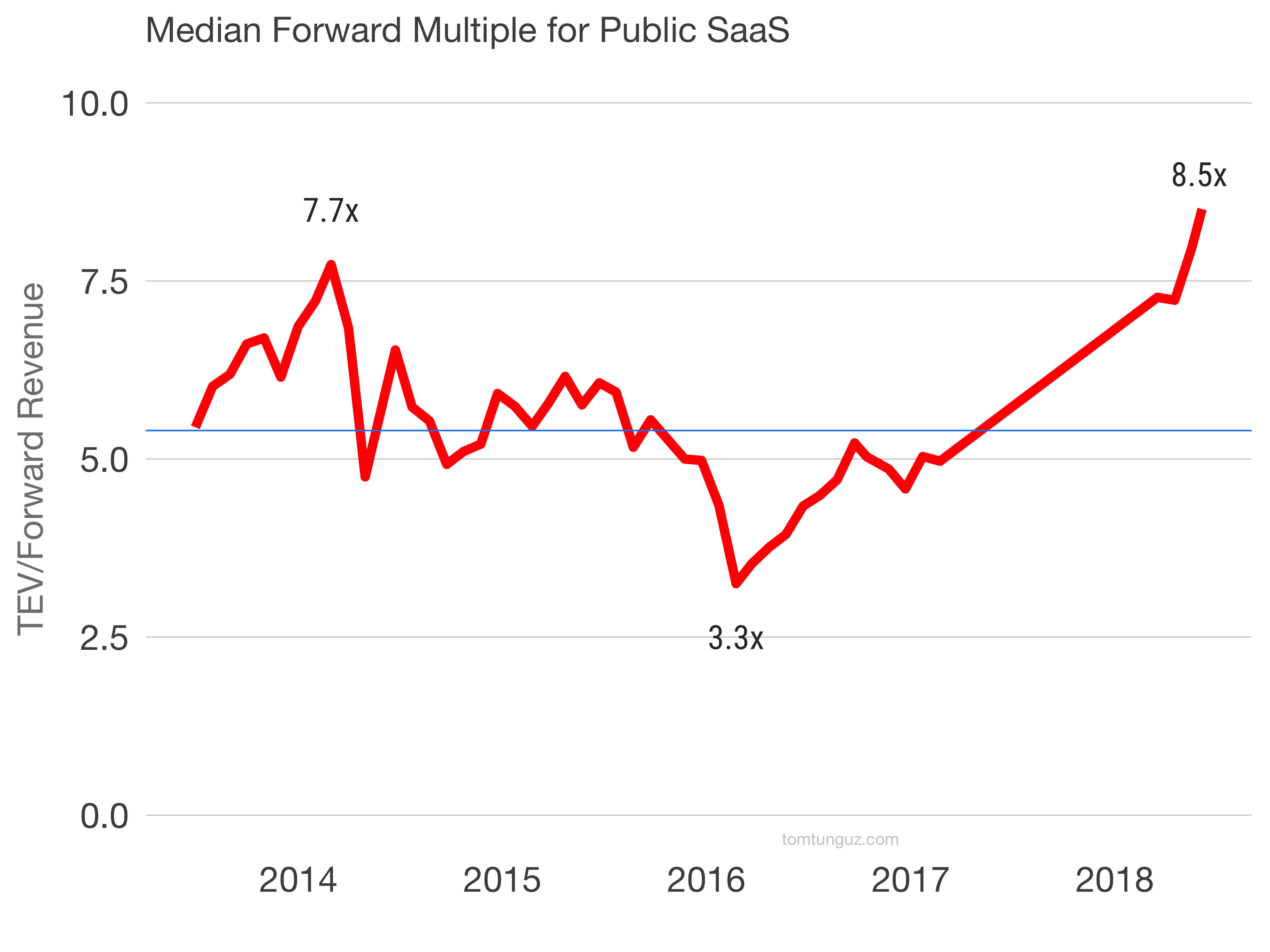There are five forces driving the startup ecosystem today. They are working together to reinforce a high valuation environment. These forces are:
- An infusion of capital into Startupland. There are many reasons for this. The money supply in the US has doubled in the last 10 years. A low interest rate environment means a low cost of capital, which means yield is hard to find for cash.
- VCs raise larger funds and more frequently. Core funds, opportunity funds, supergrowth funds. Private capital has become so abundant that it supplies hundreds of millions and billions to startups. In addition to the size, venture capitalists are raising funds more frequently. Instead of every three years, many VCs are raising every two years. Greater dollars means more competition. And we all know what happens when demand exceeds supply: prices increase.
- Market maturity. Software models are well understood. Many of the metrics that formerly were applied only to public companies are now applied to SaaS companies. We talk about valuation as a function of new quarterly bookings or revenue multiples/ARR multiples, even at the early stages. There are standard metrics for sales, customer success in marketing efficiency that are used broadly within the industry. There are books written about the ways to build a go to market for software company. All of this means more efficient pricing of startups.
- Aggressive Acquisition Market and Strong Multiples in the IPO Market. SaaS forward multiples are at ten year highs. The average forward multiple is now 8.5x. This means public companies are worth more when they go public and as they are public. Acquisitions also occur at much larger multiples. The recent Github and Mulesoft acquisitions occurred at astounding multiples relative to public comparables. When startups are valued this highly in the late stage markets and the public markets, the effect is also felt in earlier rounds.
- Balance Sheets as Competitive Advantage. Balance sheet sizes have become a moat. In addition to technology, network effects, and expertise, a startup’s cash position is a competitive advantage. Imagine two startups in the same space with similar funding. The one that can raise a $250m round from a later stage mega-fund suddenly has a huge and difficult-to-assail advantage.
The question is whether the trade is positive, negative or neutral for founders and investors.
For founders, greater access to capital at higher valuations from investors who understand these models better than in the past are all positives. The downside may be the greater expectations placed on the ultimate value of the companies and the potential risk of a pricing correction on the business. Maintaining a plan to short term profitability is the best hedge to that risk.
For investors, this environment also has many benefits. There is a larger universe of investors to invest in companies at later stages, increasing fundraising likelihood. Subsequent rounds are completed at higher valuations, boosting IRR and paper multiples. M&A and IPO occur at higher valuations. On the downside, entry price is higher, concentrating portfolios.
All of this works until it doesn’t. Should there be a correction in multiples or prices, then there will be pain. Until then, the music continues to play.
